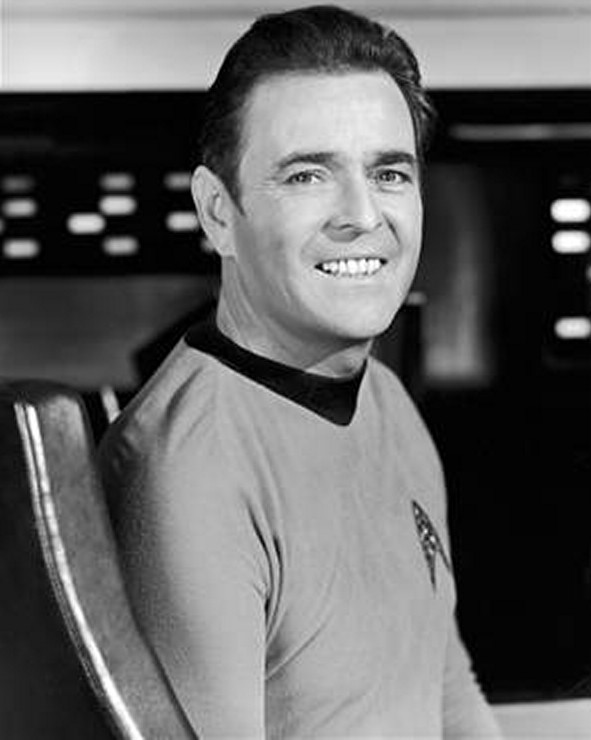 Image by Daniela Realpe from Pixabay
Image by Daniela Realpe from Pixabay
Even people who have never watched the original Star Trek series are familiar with the phrase, ?Beam me up, Scotty.? More than 50 years after it was first uttered (in some form) on the science fiction TV show, the saying has been repeated in everything from internet memes to pop songs.
Why has the idea of ?beam me up? caught the imagination of so many people? And what does it mean?
It?s Technomagical
Originally, the idea of ?beaming? referred to the transporter on the Enterprise, which allowed instantaneous travel from one location to another. As the story goes, individuals and small groups could be ?beamed? to or from a transporter platform or a remote location, provided the transporter technology could ?lock in? on the person?s ?coordinates? (presumably, geographical coordinates).
In Star Trek lore, the transporter technology works like this: The individual is dematerialized atom by atom and then transmitted (through air or space or a mysterious ether) to the desired destination, where the atomized bits are then reassembled after passing through a biofilter to get rid of alien bugs or contamination (Krauss, p. l84). You?re here one moment, and thousands of miles away the next. Instant transportation!
The allure of being ?beamed up? is understandable. Who hasn?t dreamed of traveling to someplace far away without the expense, time, and inconvenience of conventional transportation? In the century between the mid-19th and mid-20th centuries, there was a flurry of innovation in travel, with three major new modes developed one right after the other: the train, automobile, and airplane. Since then, all three technologies have been improved and refined, but there still has been no new, different transportation technology. Aren?t we ready for something revolutionary? Why shouldn?t it be a transporter beam?
Science fiction writers don?t have to explain the scientific processes behind the stuff they dream up, but their imagined creations do inspire scientists and engineers. In real life, scientists have tried to experiment with a type of transporter. They?ve had some limited success, but whether something like the Star Trek device will ever be invented ? and whether it could be used on human beings ? is still unknown.
Deux Ex Machina, or the Instant Exit
In popular culture, the most popular interpretation of ?Beam me up, Scotty? is the desire to escape. You?ve seen variations of it in memes that say things like, ?Beam me, Scotty? there?s no intelligent life on this planet.?
Indeed, the Star Trek transporter was used as a plot device to rescue characters from danger or imminent death. Alien about to attack? Phaser pointed at you? Space shuttle starting to blow up? No problem ? just activate the transporter and beam the heck out of there.
In literary analysis, this sudden plot twist is called deux ex machina, or God from the machine. It was first used in ancient Greek and Roman drama, where a character depicting a god would sudden appear on stage, often lowered down by a crane, and use his magic powers to rescue the hero from an impossible situation. In contemporary times, we seem to have dispensed with a god, leaving only the magic powers of technology. The machine has become the god.
 Image by LionFive from Pixabay
Image by LionFive from Pixabay
Like many technologies, past and present, the idea of the transporter combines science, magic, and religion: it?s a problem-solver and a means of salvation. Saying ?Beam me up? becomes a prayer, a plea, or an incantation. Theologians have used the phrase to describe the Christian prophecy of the Rapture. Scientists and researchers have included ?Beam me up? in scholarly papers in fields such as nursing, emergency medicine, respiratory medicine, undocumented immigration, and farming.
Hello, Hip Hop
In recent years, ?Beam me up? has inspired songwriters, who have included the phrase in their lyrics or song titles.
Two songs use the phrase in its customary meaning. In ?Beam Me Up? by P!nk (2012), the chorus evokes the desire for rescue from a difficult situation, as she sings, ?Beam me up/Let me be lighter/I?m tired of being a fighter.? In an interview, P!nk revealed she wrote the song about a friend who had lost a child. A song that same year by the Swedish group Cazzette also uses the title ?Beam Me Up? and seems to be about escape.
Perhaps the most famous song not only uses the full phrase, ?Beam me up, Scotty,? but also infuses new meaning into it. Hip-hop artist Nicki Minaj?s 2009 mixtape album was titled Beam Me Up Scotty and featured her song by the same name. The lyrics express self-power in the midst of chaos, and the phrase ?Beam me up, Scotty? is used only briefly: ?Ahh, beam me up, Scotty/My wa-wa wine/My wine is too dutty [dirty].?
 Nicki Minaj at 2010 MTV Video Music Awards. Photo by Philip Nelson
Nicki Minaj at 2010 MTV Video Music Awards. Photo by Philip Nelson
Could it possibly also indicate a desire to escape? Maybe, but listeners have other theories. On the website Genius, fans offer theories of references to politics, and turning up the music louder, and cocktails. Yes, the Urban Dictionary explains that one definition of ?beam me up? is to become drunk on Jim Beam whiskey. Combined with the word ?Scotty,? however, Urban Dictionary states, ?It is response to confirm that you are ready for whatever is being asked of you.?
Am I More than My Atoms?
On another level, the possibility of ?beaming up? is (as Spock would say) fascinating to philosophers, who have debated questions of persistence of identity. If I am dematerialized in one place and rematerialized in another, am I still me? And how do I know?
Several episodes of various Star Trek series have dealt with possible transporter accidents and the resulting effects on personality and self-identity, with the most famous being ?The Enemy Within,? season 1, episode 5, of The Original Series. The transporter malfunctions, splitting Captain Kirk into two versions of himself, one good and one evil (both played by William Shatner). Chaos ensues until Scotty (James Doohan) finally repairs the technology. The two Kirks are run through the transporter process again and reunited as two halves of a whole. Deep stuff, huh?
Yet, from a philosophical point of view, the Star Trek transporter device raises questions about belief in a type of Cartesian body-mind dualism. This idea of a human being consisting of both body (matter) and spirit, soul, or mind (information) seems to be the assumption behind personality changes, identity switches, and other results of transporter accidents. As Lawrence Krauss points out in his book, The Physics of Star Trek, ?If a person were beamed aboard the Enterprise and remained intact and observably unchanged, it would provide dramatic evidence that a human being is no more than the sum of his or her parts? (p. 86)
But Star Trek episodes present stories where the ?information? of a person?s self ? personality, memories, and so on ? is transmitted separately. For example, in season 1, episode 7 of Star Trek: The Next Generation, Captain Picard (Patrick Stewart) is transported out into space without his body, as ?pure energy.? Krauss remarks, ?I don?t think you can have it both ways. Either the ?soul,? the ?katra,? the ?life force,? or whatever you want to call it is a part of the body, and we are no more than our material being, or it isn?t? (p. 87).
 Image by Gerd Altmann from Pixabay
Image by Gerd Altmann from Pixabay
A possible reconciliation to the transporter mind-body problem could be the theory of transhumanist Ray Kurzweil. He points out that cells in the body are continuously being replaced naturally, so that ?you are completely replaced in a matter of months.? (Most sources say it takes closer to seven years.) If you are made up of new and different stuff than you were several years ago, are you still the same person? Kurzweil has an answer for that. He believes that the human being is neither physical body nor ethereal soul, but that our selves or identities are stable and reproducible patterns. He writes:
Fundamentally, we are not the stuff that makes up our bodies and brains. These particles essentially flow through us in the same way that water molecules flow through a river. We are a pattern that changes slowly but has stability and continuity, even though the stuff comprising the pattern changes quickly.
What that ?stuff? consists of is a bit fuzzy, but perhaps it is this river of information that supposedly flows through the transporter beam. In fact, according to fictional Star Trek manuals, the technology includes something called a pattern buffer.
Until someone can explain with certainty what consciousness is, what causes it, or what it consists of, identity and transporter technology will remain an entertaining thought experiment for philosophers. As for popular uses, ?beam me up? will continue to evolve as it inspires creativity and imagination.
References
Krauss, Lawrence M. The Physics of Star Trek. Basic Books, 2007.
Kurzweil, Ray. ?This Is Your Brain on Neural Implants.? Slate. Nov. 16, 2012. https://slate.com/technology/2012/11/ray-kurzweil-are-you-still-you-if-your-brain-is-enhanced-with-neural-implants.html
 James Doohan as Chief Engineer Montomery Scott on Star Trek: The Original Series (1966?1969). Public domain.
James Doohan as Chief Engineer Montomery Scott on Star Trek: The Original Series (1966?1969). Public domain.
This week marks the 100th anniversary of the birth of James Doohan, the actor who created the character of Chief Engineer Montgomery Scott, or ?Scotty,? and inspired the ?Beam me up, Scotty? catchphrase.
Doohan was born March 3, 1920 in Vancouver, British Columbia. He served in the Royal Canadian Army in World War II and was wounded in the D-Day invasion of Normandy. The wounds affected his health throughout his life.
He began his career in CBC radio and television. In the 1950s he starred along with fellow Canadian William Shatner in a science fiction series called Space Command. After a number of small parts on American TV, Doohan joined Shatner once again in for the classic Star Trek series (1966?1969).
Doohan was instrumental in creating the character of Scotty. He fashioned the Scottish accent and gave his middle name, Montgomery, to Chief Engineer Montgomery Scott of the U.S.S. Enterprise.
After Star Trek ended, Doohan guest starred on several TV shows and reprised the role of Scotty in subsequent shows in the Star Trek franchise. Later, he made his living chiefly through personal appearances. He died in 2005.


